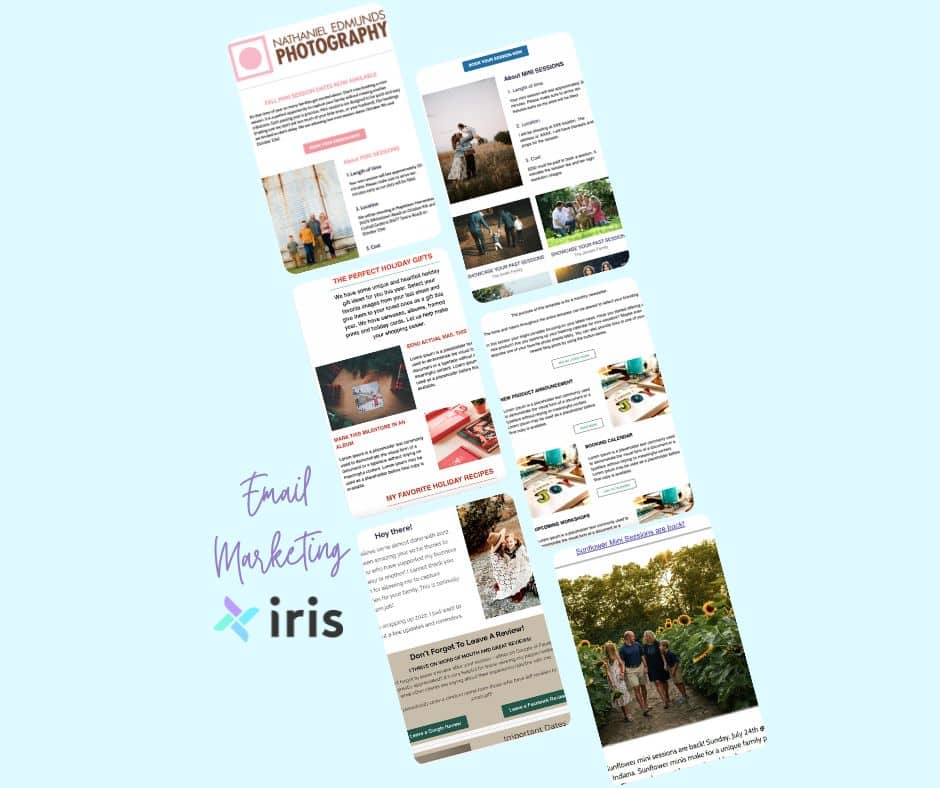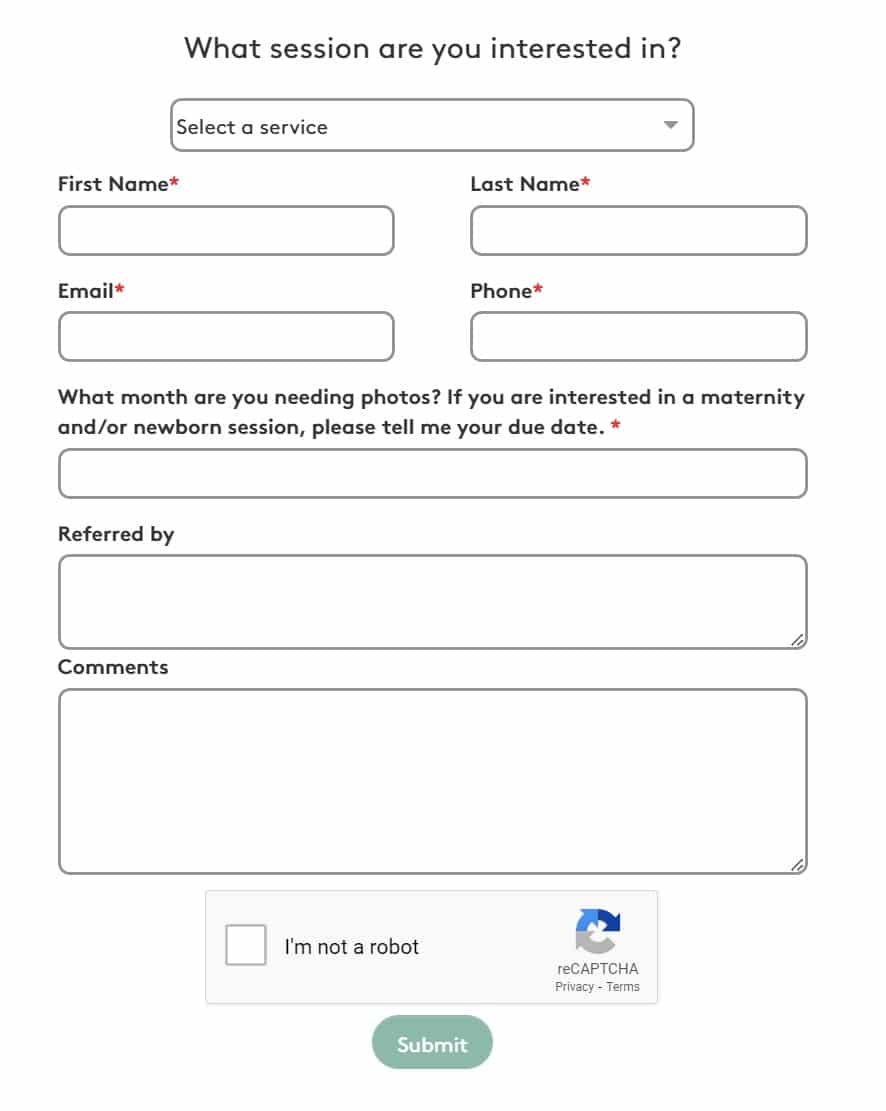Marketing for Photography
Welcome to Photography Marketing 101, where we’ll explore tips and tricks for success in promoting your photography business. In today’s competitive market, it’s crucial to have a solid marketing strategy to stand out from the crowd and attract your target audience. From choosing a target audience and building a brand identity to creating an effective online presence and implementing marketing strategies, we’ll cover all the essentials. So grab your camera and let’s dive into the world of photography marketing!
Choosing a Target Audience
When choosing a target audience for your photography marketing efforts, it is essential to consider their specific needs and preferences. This will help you tailor your content and messaging to resonate with them effectively. Conduct thorough research on platforms like Instagram or websites that your potential clients frequent to understand their interests and behaviors better. By focusing on a specific target audience, you can maximize the impact of your marketing strategies and attract the right clientele for your photography business.
Understanding the needs and preferences of your target audience is crucial in creating successful marketing campaigns. Analyze data from website analytics or social media insights to gain valuable insights into their demographics, interests, and purchasing behavior. Use this information to develop targeted content that showcases how your photography services align with their desires. By catering directly to the needs of your chosen audience segment, you can establish yourself as an expert in the field while building lasting relationships with potential clients through effective marketing techniques.
Identifying your target audience
Demographic segmentation involves dividing your target audience based on factors such as age, gender, income level, and occupation. By understanding these demographics, you can tailor your marketing strategies to reach the right people in the right way. For example, if you’re a wedding photographer targeting young couples for their big day, having an engaging website with stunning portfolio samples and using Instagram to showcase behind-the-scenes moments can be effective.
Tailoring your marketing strategies to specific demographics, such as young couples looking for a wedding photographer, can be effective in reaching the right people.
Psychographic segmentation
Psychographic segmentation delves into the psychological aspects of your audience by examining their interests, values, attitudes, and lifestyles. This allows you to create content that resonates with them on a deeper level. If you specialize in outdoor photography and want to attract adventure enthusiasts who appreciate nature’s beauty captured through lenses, consider sharing inspirational stories of exploration through blog posts or organizing photo contests on social media platforms like Instagram.
Geographic segmentation
Geographic segmentation takes into account where your target audience is located geographically. Understanding this aspect helps you customize your marketing efforts based on regional preferences or local trends. If you offer portrait photography services in a specific city or town known for its vibrant arts scene or annual festivals/events worth capturing forever in photographs – highlight those connections both online (website) and offline (local exhibitions).
Remember that identifying your target audience is crucial for successful marketing in the photography industry as it enables tailored strategies catering directly to their needs and preferences.

Understanding the needs and preferences of your target audience
Market research and surveys are essential tools for understanding the needs and preferences of your target audience. By gathering data on their demographic, interests, and purchasing habits, you can tailor your marketing efforts to better resonate with them. Additionally, analyzing customer feedback allows you to gain valuable insights into what they like or dislike about your photography services or products. Monitoring industry trends is also crucial in staying ahead of the competition and ensuring that your website or Instagram presence remains relevant to your target audience’s evolving tastes and preferences.
Overall blog post Outline (sub-headings):
H3 Identifying your target audience
H3 Understanding the needs and preferences of your target audience
End of Outline.
Building a Brand Identity
Building a strong brand identity is crucial in the competitive world of photography marketing. A unique and memorable brand name will help you stand out from the crowd and leave a lasting impression on potential clients. Designing a visually appealing logo and consistent visual style further reinforces your brand’s presence and professionalism. Crafting a compelling brand story that showcases your expertise, passion, and unique approach to photography will connect with your target audience on an emotional level, fostering trust and loyalty.
Creating a unique and memorable brand name
Researching competitors’ brand names is an essential step in creating a unique and memorable brand name. By studying your competition, you can identify what works and what doesn’t in your industry. This will help you differentiate yourself and avoid any confusion with similar-sounding names.
Brainstorming creative and catchy words is crucial for standing out from the crowd. Think outside the box, experiment with different combinations of words, and consider using puns or play on words to make your brand name memorable. Don’t be afraid to take risks and be bold!
Considering the target audience’s preferences is key to ensure that your brand name resonates with them. Research their values, interests, and language style to choose a name that speaks directly to them. Keep it simple yet impactful so that it leaves a lasting impression.
Stay tuned for our next blog post where we dive into designing a logo and visual style that complements your brand’s identity!
Designing a logo and visual style
Hiring a professional graphic designer is crucial in designing a logo and visual style that truly represents your photography business. Their expertise will ensure that the design is well-crafted, visually appealing, and aligned with your brand identity.
When choosing colors, fonts, and imagery for your logo and visual style, it’s important to consider how they reflect your photography style. Opt for colors that evoke emotions related to your work, select fonts that are clean and legible yet convey a sense of creativity or elegance, and incorporate imagery that showcases the essence of your photography niche.
Create a versatile logo that can be used across different platforms to maintain consistency in branding. A well-designed logo should be scalable so it looks great on various sizes without losing its impact. Consider different versions of the logo for use on social media profiles, websites, print materials like business cards or brochures.
- Hire a professional graphic designer
- Choose colors, fonts & imagery reflecting photography style
- Create versatile logos

Creating an Effective Online Presence
Building a professional website is essential for creating an effective online presence. Showcase your photography portfolio, provide detailed information about your services, and make it easy for potential clients to contact you. Design a clean and visually appealing layout that reflects your style and attention to detail.
Optimizing your website for search engines is crucial in order to increase visibility and attract more potential clients. Conduct keyword research relevant to photography marketing and incorporate them strategically into the content of your website. Additionally, optimize meta tags, headings, image alt text, and URLs with keywords related to your niche.
Leveraging social media platforms can greatly enhance your online presence as a photographer. Choose platforms that align with the nature of visual content such as Instagram or Pinterest. Regularly share high-quality images from your portfolio along with engaging captions that showcase the unique stories behind each photograph. Interact with followers by responding promptly to comments and messages.
End of Creating an Effective Online Presence section
Building a professional website
Choosing the right domain name is crucial when building a professional website for your photography business. Opt for something that reflects your brand and is easy to remember, ensuring potential clients can easily find you online.
Designing an attractive and user-friendly layout is essential in creating a positive user experience on your website. Use high-quality images, clear navigation menus, and intuitive design elements to engage visitors and keep them exploring your site.
Showcasing your portfolio and services prominently helps establish credibility with potential clients. Feature a selection of your best work on the homepage and create dedicated pages highlighting different types of photography services you offer, making it easy for visitors to understand what you can provide for them.
Optimizing your website for search engines
Performing keyword research is crucial for optimizing your photography website for search engines. By identifying the most relevant and frequently searched keywords in the photography industry, you can strategically incorporate them into your website content to improve visibility and attract targeted organic traffic.
Implementing on-page SEO techniques such as meta tags and alt text is another effective way to optimize your photography website. These elements provide valuable information to search engines, helping them understand what your website is about and increasing its chances of being ranked higher in search results.
Creating Content
Creating high-quality, relevant content should be a top priority when optimizing your photography website for search engines. By regularly producing informative articles, blog posts, and galleries that appeal to your target audience, you can improve organic rankings and establish yourself as an authority in the field of photography marketing.
- Perform comprehensive keyword research specific to the photography industry.
- Incorporate identified keywords strategically throughout your website content.
- Optimize meta tags and alt text with relevant keywords.
- Regularly prod
Leveraging social media platforms
Identifying the most suitable social media platforms for photographers is crucial in effective marketing. Each platform offers different features and demographics, so it’s important to choose wisely. Regularly sharing engaging visual content with proper hashtags and captions helps attract a larger audience and increase visibility. Additionally, engaging with followers, responding to comments, and building an online community fosters a sense of connection and loyalty among your audience.
By leveraging social media platforms effectively, photographers can enhance their marketing strategies by reaching a wider audience. It is essential to identify the most suitable platforms that align with your target demographic to maximize engagement potential. Consistently sharing captivating visual content accompanied by relevant hashtags and compelling captions will help attract attention from potential clients or fans. Moreover, actively interacting with followers through timely responses to comments not only builds trust but also creates a sense of community around your brand or work as a photographer
.
Showcasing Your Work
Creating a stunning portfolio is essential for showcasing your best work. Select only your most impressive photographs that demonstrate your expertise and attention to detail. Use clean, professional layouts and high-quality images to captivate potential clients and leave a lasting impression.
Participating in photography competitions and exhibitions provides excellent opportunities to gain exposure for your work. Enter renowned contests and showcase your talent alongside other talented photographers. Exhibiting at galleries or art shows allows you to reach a wider audience, attract new clients, and establish credibility within the industry.
Collaborating with fellow photographers or influential individuals can significantly boost your visibility as well. Take part in joint projects or feature each other’s work on social media platforms. Partnering with influencers who align with your brand can help you reach their followers, expanding your network of potential clients.
Remember, marketing yourself effectively is crucial in the competitive world of photography. By creating an outstanding portfolio, participating in competitions/exhibitions, and collaborating strategically with others; you’ll be well on your way to success!
Creating a portfolio that highlights your best work
Creating a portfolio that highlights your best work is essential in the world of photography marketing. To ensure your portfolio stands out, follow these key steps:
- Selecting and curating images that represent your unique style:
- Choose images that showcase your distinct artistic vision and technical skills. This will help potential clients get a sense of your signature style.
- Organizing your portfolio by category or theme for easy navigation:
- Categorize your work into different sections based on genres, such as portraits, landscapes, street photography, etc. This makes it easier for viewers to navigate through and find what they’re looking for.
- Optimizing the presentation of each image with high-quality resolution and proper formatting:
- Ensure all images are displayed at their highest quality resolution possible. Pay attention to details like color accuracy and composition when formatting each image to create an impactful visual experience.
By following these steps, you’ll create a visually stunning portfolio that effectively showcases the best of your photography skills.
Participating in photography competitions and exhibitions
Researching and identifying reputable photography competitions is key to maximizing your chances of success. Look for competitions that have a strong reputation, well-established judging panels, and a track record of showcasing exceptional work. Take the time to understand their submission guidelines and ensure that you submit your best work in accordance with their requirements.
In addition to submitting your work, attending exhibitions provides an invaluable opportunity to network with fellow photographers, industry professionals, and potential clients. Engage in conversations about your photography style and approach, exchange ideas with other artists, and seize any chance to showcase your portfolio. Building relationships within the photography community can open doors for future collaborations and business opportunities.
Remember: Success in photography competitions and exhibitions goes beyond simply participating; it requires strategic research, attention to submission guidelines, networking efforts at events – all aimed at putting yourself on the radar of influential figures in the industry.
Collaborating with other photographers and influencers
Identifying compatible photographers or influencers whose aesthetic aligns with yours is crucial for effective collaboration. Look for individuals who share a similar artistic vision and style, as this will ensure a cohesive outcome that resonates with both your audiences. Planning collaborative shoots or projects together can significantly expand your reach and visibility, allowing you to tap into new networks and attract fresh followers. Additionally, don’t forget the power of cross-promotion on social media platforms – mutually promoting each other’s work creates a symbiotic relationship that benefits both parties by reaching wider audiences and generating increased engagement.
Implementing Effective Marketing Strategies
Offering special promotions and discounts can be a highly effective way to attract new clients and retain existing ones in the competitive photography industry. By providing limited-time offers or exclusive deals, you create a sense of urgency that encourages potential customers to take action. Additionally, offering incentives such as discounted packages or free add-ons can help differentiate your business from others and generate more bookings.
Utilizing email marketing campaigns is an essential tool for reaching out to your target audience and nurturing relationships with past clients. By collecting email addresses through website sign-ups or during photo sessions, you can build a valuable database of contacts. Regularly sending newsletters with updates on your latest work, upcoming promotions, or helpful tips not only keeps you top-of-mind but also establishes credibility as an expert in photography.
Advertising on relevant platforms allows you to reach a wider audience that is actively seeking photography services. From social media platforms like Instagram and Facebook to specialized directories for photographers, choosing the right advertising channels will ensure your marketing efforts are targeted towards those who are most likely interested in hiring a professional photographer. Experimenting with different ad formats and targeting options will help maximize the visibility of your business within these platforms’ vast user base.
Offering special promotions and discounts
Limited-time discounts for first-time customers are a great way to entice new clients to try out your photography services. By offering an exclusive discount for their initial booking, you can capture their attention and showcase the value of your work from the very beginning.
Referral programs with incentives encourage existing clients to spread the word about your photography business. By offering rewards such as discounted sessions or prints for each successful referral, you create a win-win situation where both parties benefit.
Seasonal promotions are an effective strategy to attract new clients during specific times of the year when demand is high. Whether it’s holiday-themed mini-sessions or special packages tailored to a specific season, these promotions create urgency and excitement among potential customers.
- Limited-time discount for first-time customers
- Referral program with incentives for existing clients
- Seasonal promotions to attract new clients

Utilizing email marketing campaigns
Building a strong subscriber list is crucial for effective email marketing campaigns. Encourage website visitors to sign up by offering valuable content and exclusive updates, creating an engaging user experience that compels them to join.
Once you have a substantial subscriber base, send personalized newsletters showcasing your recent work to keep your audience engaged. Tailor the content based on their preferences and previous interactions, demonstrating your expertise and keeping them informed of your latest projects.
In addition to sharing recent work, utilize email marketing campaigns to provide subscribers with exclusive offers and sneak peeks into upcoming projects. This sense of exclusivity creates a feeling of belonging among subscribers, fostering loyalty and increasing the chances of repeat business in the future.
Iris + Email Marketing
Discover the power of seamless email marketing with Iris! Our platform not only streamlines your photography business but also empowers you to connect with your clients like never before. With Iris, you can effortlessly create and send personalized email campaigns, keeping your clients informed, engaged, and delighted at every step of their journey. From customizable templates to automated workflows, Iris offers an array of tools designed to enhance your communication and strengthen your client relationships. Step into the world of effective email marketing with Iris and watch your business thrive!
Advertising on relevant platforms
‘Featured Photographer’ advertisements in local magazines capture the attention of a targeted audience who are actively seeking photography services. By showcasing your work and expertise in these publications, you can establish yourself as a reputable professional within the community.
‘Sponsored Posts’ on popular photography blogs or social media influencers’ accounts allow you to reach a wider audience who have an interest in photography. Collaborating with influential individuals or platforms helps to build brand awareness and credibility, increasing the likelihood of attracting potential clients.
A well-executed Google AdWords campaign targeting potential clients searching for photography services allows you to appear at the top of search results. This strategic approach ensures that your business is visible to those actively seeking photographers, enhancing your chances of securing new clients.
By leveraging ‘Featured Photographer’ advertisements in local magazines, ‘Sponsored Posts’, and Google AdWords campaigns, you can effectively promote your photography services across various relevant platforms and increase your visibility among target audiences.
Building Relationships and Networking
Building strong relationships and networking within the photography industry is crucial for success. Attending industry events and workshops provides valuable opportunities to connect with fellow professionals, exchange ideas, and stay updated on the latest trends. Joining photography associations and communities not only expands your network but also allows for knowledge sharing and potential collaborations. Additionally, collaborating with complementary businesses can lead to mutually beneficial partnerships that enhance marketing efforts while reaching a wider audience. These strategies build lasting relationships that contribute to a thriving photography business in today’s competitive market.
Attending photography industry events and workshops
Building connections with fellow photographers is a crucial aspect of attending photography industry events and workshops. By networking and establishing relationships with other professionals in the field, you can gain valuable insights, exchange ideas, and potentially collaborate on future projects. These connections can also lead to referrals and partnerships that can help grow your photography business.
Attending industry events and workshops provides an opportunity to learn from experienced professionals in the field. By participating in seminars, panel discussions, and hands-on sessions led by experts, you can acquire new skills, techniques, and knowledge that will enhance your craft as a photographer. Learning from those who have already achieved success in the industry allows you to stay updated on current trends while expanding your creative repertoire.
Showcasing your work in a competitive environment is another advantage of attending photography industry events and workshops. Competitions or exhibitions often take place during these gatherings where photographers have the chance to display their best work for recognition or potential clients. This exposure not only validates your talent but also helps build credibility within the industry.
End of Attending photography industry events sub-heading
Joining photography associations and communities
Joining photography associations and communities offers a multitude of benefits for photographers looking to enhance their marketing strategies and boost their professional network. By becoming part of these groups, you can:
- Network with like-minded individuals who share your passion for photography
- Gain access to industry resources and valuable knowledge sharing opportunities
- Collaborate on projects or receive referrals that can help expand your client base
Being actively involved in photography associations and communities not only helps you stay updated on the latest trends but also provides a platform to connect with potential clients and fellow professionals in the field.
Collaborating with complementary businesses
Cross-promotion opportunities through partnerships can be a game-changer for your photography business. By teaming up with complementary businesses, such as wedding planners or event venues, you can leverage each other’s customer base to reach a wider audience. This collaborative approach allows you to tap into new markets and increase brand visibility.
Expanding your reach by tapping into new customer bases is essential for sustained growth in the competitive world of photography marketing. Partnering with related industries like videography or graphic design enables you to offer integrated services and create a seamless experience for clients. By collaborating with these businesses, you not only expand your potential client pool but also enhance the overall customer journey through convenient one-stop solutions.
Measuring Success and Adjusting Strategies
Measuring success and adjusting strategies is crucial in the world of photography marketing. By monitoring website analytics and social media metrics, you can gain valuable insights into your audience’s behavior and preferences. Tracking leads and conversions enables you to assess the effectiveness of your marketing efforts, allowing for strategic adjustments to maximize results. Additionally, collecting customer feedback and reviews provides invaluable feedback that can shape your future marketing campaigns. Stay ahead of the game by constantly evaluating data and adapting your strategies accordingly.
.
Monitoring website analytics and social media metrics
Utilizing Google Analytics allows for effective tracking of website traffic, providing valuable insights into user behavior and preferences. By analyzing bounce rates and time spent on site, photographers can gain a deeper understanding of how engaging their website is to visitors. Monitoring social media engagement through likes, comments, and shares provides an additional metric for assessing the reach and impact of photography marketing efforts.
Tracking leads and conversions
Implementing lead capture forms on your website through Iris is crucial for tracking leads and conversions. By strategically placing these forms throughout your site, you can gather important contact information from potential customers and monitor their engagement with your brand.
Tracking the source of leads through Iris allows you to identify which marketing channels are driving the most traffic to your website. By including unique URLs in different advertising campaigns or social media posts, you can easily track the effectiveness of each channel and make data-driven decisions to optimize your marketing strategy.
Using CRM software, like Iris, is an effective way to monitor conversion rates. This tool helps you keep track of every interaction with a lead, from initial contact to final purchase.
Bullet list:
- Implement lead capture forms on your website with the help of Iris
- Track the source of leads through Iris
- Use Iris for monitoring conversion rates

Collecting customer feedback and reviews
Sending personalized follow-up emails is a crucial step in collecting customer feedback and reviews. By reaching out directly to clients, you can show that their opinions are valued and encourage them to provide honest feedback about their experience with your photography services. Discover how Iris simplifies your tasks with our automated workflows. Dive deeper into the world of workflows and explore their capabilities here. With Iris, streamline your processes and boost efficiency effortlessly.
In addition to personal outreach, it’s important to actively promote customer reviews on platforms like Yelp or Google My Business. Encourage satisfied customers to leave positive reviews by highlighting the benefits of sharing their thoughts and experiences online.
To gather specific feedback from clients, consider creating surveys or polls. This allows you to ask targeted questions and gain insights into areas for improvement or satisfaction. Tailoring your questions based on different aspects of your photography services can help you collect valuable data for future business growth.
Start Your 14 Day Free Trial
No credit card required!





Recent Comments